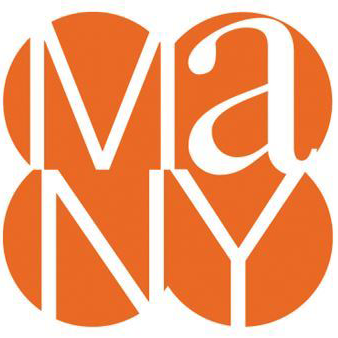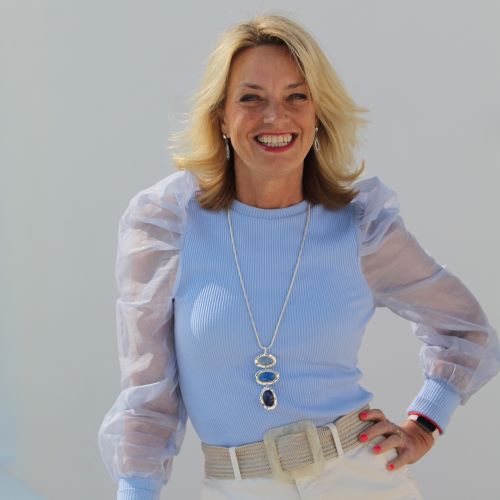MANY Episode 2
Episode 74: Museum Series Part 2
In this episode, you’ll learn how to build strong community partnerships, with Eliza Kozlowski, Rachel Unger, and Hannah Barry.
We recently attended the 2018 Museum Association of New York annual conference and spoke with attendees from all over New York State representing all types of museums and cultural institutions. I found the conversations enlightening and inspiring. Through this series, I hope you will find a new perspective on this important segment of the tourism industry and how museums and cultural institutions are working to build community, reach audiences beyond their local markets and creating new programming and events that enhance the visitor experience.
In this episode, I share my conversations with:
- Eliza Kozlowski, Director of Marketing and Engagement at the George Eastman Museum in Rochester NY: https://www.eastman.org/
- Rachel Unger, Director of Marketing and Engagement at the Memorial Art Gallery of the University of Rochester: https://mag.rochester.edu/
- Hannah Barry, Digital Engagement, and Communication Specialist, Rochester Museum and Science Center: http://www.rmsc.org/
George Eastman Museum: Attracting New Visitors
Eliza, thank you so much for taking some time out today to spend some time with us at the Museum Association of New York Conference.
Oh, it’s my pleasure. Thank you, Nicole.
I’m gonna dive right into the questions and our first question is, how do you attract visitors from the region where you’re located?
Well, we are all about partnerships and recognizing that we have destination marketing organizations in the region that are instrumental in helping us connect to people who are coming into the region or making decisions about what to do in the region. Starting locally, we work with Visit Rochester and reach out as part of Monroe County, but then the Finger Lakes Tourism Alliance and I Love New York, those are the primary partners that we use as far as reaching out. What’s wonderful about those is that we can spend some dollars that go so much further through various co-op programs and keep an eye on what the various vehicles are that they’re using to reach out and how we can be a part of those.
George Eastman Museum: Successful Partnerships
Yeah. That’s great. So you’re talking about first working with the tourism office in the city where you’re located and then broadening out into the vacation region and from there to the state. Can you give an example of a partnership that’s worked with either one or all of those organizations and what you might have plugged into?
The challenge we always have is the measurements and figuring out if something’s working, but it’s also something that we know is critical that we do and it’s always our goal to measure more than we are now. But for many years now, we’ve been doing a program that reaches the Canadian audience-across border showcases and it’s been through Visit Rochester, it’s changing a little bit as far as how it’s organized this year, but it’s an opportunity we could not afford to start doing radio sports and print ads and be part of website reaching out to a Canadian audience, but by buying into a program, we can be part of a consortium of other organizations, attractions, and hotels in Rochester that are a part of- it’s a rising tide, raises all boats. So being part of this outreach to the Canadian audience, to let them know that Rochester is here.
Part of the reason I say it’s hard as far as tracking is it’s hard to know when they’ll actually make the decision to come. It could be something we’ve been promoting for four years to Canada and it might be another two years before that particular person who’s heard about it, have a reason that they will be coming to Rochester as a destination and we’d want to make sure that George Eastman Museum is part of their trip.
Yeah, that’s a really great point because you don’t know when their decision to travel is going to come, but you want to make sure you’re top of mind. Can you share a little bit about what you’re doing locally to being top of mind? With the local audience?
We’re focused on changing exhibitions, changing events. Our message is that “There’s always something new and something to come to at the museum.” I just came out of a session that talked about digital engagement and that’s a huge part of what we do because it’s very cost-effective and we know that, for instance, Facebook and posting our exhibitions and our events on Facebook as events is a very helpful tool for us. Also, investing some dollars in Facebook’s sponsored ads, as well. We can get very targeted. It’s probably the most cost-effective way to market, versus when we have the dollars to do more traditional advertising through print publications, our local alternative arts paper, it’s harder to afford a daily newspaper so we try to get as much as we can.
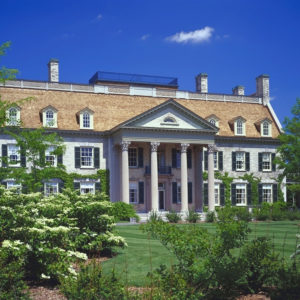
[bctt tweet=”“Facebook is probably the most cost-effective way to market, versus when we have the dollars to do more traditional advertising through print publications.” – @elizakozlowski #podcast”]
We do radio spot partnerships. We come to the table with passes that can be used for giveaways on the radio program and we’re part of their public affairs programs so there’s a dollar expense, but then also they match it because we’re a non-profit. TV, less-so. It’s the earned media trying to get TV coverage, news coverage for events that we’re doing but those are a one-time shot so it’s whether someone happened to tune in to see it that time or not. It’s looking at that balance of all areas of earned media, paid media, and looking to do as much as we can through our social media channels.
That’s a great point. So it sounds to me like it’s a balance, as you mentioned, but it’s also kinda integrated depending on what it is you’re promoting and where you’re actually promoting that so you’ve got.
Absolutely. With every project that we do, it’s sitting down and looking at what’s the marketing mix for this particular thing. For instance, last summer we had an exhibition celebrating the 100th anniversary of the national parks. We were able to pull together some money from our marketing plan, but it still was not a significant amount to do every channel that we could, every channel within the media mix. We decided the biggest bang is if we could do billboards. We don’t usually have the money for billboards, but what’s the better way to show a beautiful panorama of a national park- than a billboard? It was extremely successful for us to have that recognition and then just to signal to the community that, wow, this is something important that’s going on ’cause we don’t usually see billboards for the George Eastman Museum. It was very effective for us.
Yeah. With that example, I actually love that example because it tied into a bigger anniversary that was happening with national parks so you were able to pull in interest because of that because there was already a whole bunch of buzz around that.
Yeah, you bring up a great point which is, looking at where are there like events going on, whether it is anchored by something like an anniversary or some other significant event in your community, or it happens that we have an exhibition this summer of work by photographer, David Levinthal, and we’ve learned that the Fenimore Art Museum in Cooperstown also has some exhibitions of his work. It’s a wonderful opportunity for us to reach out and do some cross promotion. Summertime, when people conceivably could be coming east to west or west to east, to try to take in both exhibitions. Being able to promote each other through our social media channels, through our e-newsletters to show that collaboration.
Yeah, that’s great. I love how you found out that Cooperstown is also holding something very similar so that cross-promotion will be really cool.
Yeah. Sometimes it’s very intentional where it’s part of a plan to know that there are all these things happening in different parts of the state. Other times, it’s just serendipity and you’re like, “Oh! Look what’s happening.” But the goal is to be opportunistic and looking out for those things. That was an obvious promotion because it’s the two exhibitions, both of his work, but he uses miniatures and toys in his work. He creates these little stage sets, photographs them, and recreates things such as the raising of the flag in Iwo Jima or crossing Delaware. So with that, we’ve partnered with a strong national museum in play because they are all about miniatures and collecting toys. One of their curators is part of a podcast that we’ve created as the audio tour for the exhibition and then that curator’s gonna give a talk, as well, about the history of some of the toys that are in the exhibition that David Levinthal uses in his photographs. So it’s just thinking creatively about who’s the appropriate partner based on what the content is for the theme.
George Eastman Museum: Being a Community Anchor
That’s awesome. So you’ve touched on a little bit, in talking about these partnerships and reaching out to the community. But when you think about your museum being a community anchor, what kinds of things are you doing to be that anchor within the community?
There’s a number of different ways. I was just having a conversation with someone about something as simple as being a venue for people to come and host events there, or host a meeting there, or viewing us as a community resource. There are times when there might be an important film that an organization like the Alzheimer’s Association wants to show and we have a theater where we can show a film. We would open up on a Monday night and we don’t have a regular film being screened and be the venue for that so that they can share that film and have a dialogue and view us as this central place in the community where people can gather.
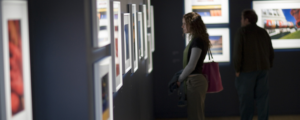
[bctt tweet=”“Becoming an anchor within your community can be as simple as being a venue for people to come and host events or a meeting.” – @elizakozlowski #podcast”]
There are other times, where it’s a particular topic that might be of an exhibition or a film series, where it’s addressing a particular topic. For instance, we had an exhibition recently, the work of Eugene Richards, and it talked about his themes, everything from poverty to race to drug addiction. His work wasn’t necessarily taken in present day, but we invited people from the community to bring their Rochester voice because his work wasn’t photographed in Rochester, it was photographed in Massachusetts, New York City, and Nebraska, but then we talked to some local community experts on these various topics. For instance, we had someone who was a drug addiction counselor come and talk about the opioid problem-in Rochester. How can we use our exhibitions and the themes that are explored in our exhibitions as a jumping off point for better understanding in our community and what’s some of the challenges that our own community’s dealing with? Then giving a voice for some of those organizations and those experts who are addressing those challenges.
George Eastman Museum: Future Outlook
That’s great. So now looking into the future, what plans do you have in the next three to five years?
The one I’m most excited about because we’ve talked about it for so long. For anybody’s who’s visited the George Eastman Museum in the past, I joke that we’re the “Museum of Many Doors” because there are all sorts of doors that you can come in and no one obvious museum entrance. Our museum entrance is a little bit hidden so you have to trust us when we have signs that tell you where to go. We’re very fortunate. Through the Regional Economic Development Program, we were able to get some funds, along with a private donor, and we’re breaking ground in January on a brand new, much more accessible, central entrance and welcome center. It will be a big, new glass atrium that we’re building that we’ll have the entrance with the welcome desk, but then also a newer store and a bigger café centrally located off our parking lot so that it’s the obvious place to come in.
For our visitors, it becomes the central access, rather than having a long linear experience, they’ll be able to come in right in the middle of the museum that’s become the social hub, already. It’s paying attention to how our guests use our museum now and having something that’s going to be a much more accessible, welcoming location.
Well, it sounds like that’s gonna do two things. One, it’s going to give you an easy to find the entrance, but also, I like how you said it brings in what is the visitor experience now what are they doing how do they want to use and experience the museum and addressing that at the same time.
Exactly. As part of the process, we’re stepping back and saying, “What are the various stories? What’s the narrative?” And “Where do we begin to tell that story?” Perhaps it’s even before you walk into the museum. What signage is outside so that when you come in, you have a better understanding that we celebrate the legacy of George Eastman, but also the history of photography, and the history of cinema. Then as you make your way into this welcome center and into the lobby, that story will unfold, and then it will help you understand what your choices are as far as starting into the mansion or starting into the galleries and then vice versa.
That’s awesome. Well, it sounds like there’s a lot of fun things in store for you. I appreciate you sharing this with our listeners today. And we’ll catch up with you soon.
Oh, that’s wonderful. Thanks so much, Nicole.
Memorial Art Gallery of the University of Rochester: Attracting New Audiences
What a great conversation with Eliza, her focus on collaborations and cross-promotions was intriguing and I love how broad the George Eastman Museum is with their reach into the community and making sure that Rochester’s voice is represented within the programming. Check out my conversation with Rachel to find out how her organization is executing on the concept of “One MAG fits all.”
Rachel Unger, Director of Marketing and Engagement at the Memorial Art Gallery of the University of Rochester: https://mag.rochester.edu/
Rachel, thank you so much for taking some time out at the Museum Association of New York States annual conference. I’m really enjoying talking to folks here at the conference and learning from them and interested to hear your perspective. Let’s start with the first question, how do you attract new audiences within your region?
Well, there’s always that stigma about museums, that it maybe isn’t a place for everybody, that there’s only one type of person that goes there to have a boring walkthrough of the gallery. That’s not true. We have the whole concept of, “One MAG fits all,” and are pushing forward and trying to offer programming, exhibitions, and opportunities for people to come to the gallery. Whether it be a collector’s event down to, our program called Detours, which takes our permanent and traveling collection and puts a fun spin on them. We just had a Harry Potter detour and how something from Harry Potter can be interpreted in the collection and how everything goes together.
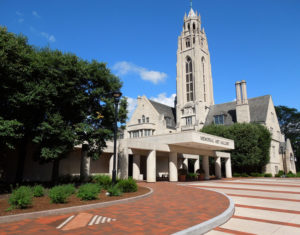
[bctt tweet=”“There’s always that stigma about museums that it maybe isn’t a place for everybody, that there’s only one type of person that goes there to have a boring walkthrough of the gallery. That’s not true.” – Rachel Unger #podcast”]
We were trying to find a balance of offering people something that is straight scholarly, coming in for programming, down to having Museum of the Dead Bash so that we are offering something for everybody and trying to push that, is that comfort cocktails or comfort conversation?
I love the idea of the detours and love the idea of connecting to something that’s very popular and trendy at the moment like Harry Potter. That sounds like a lot of fun! How are you reaching past your regional market for visitors?
Past our regional market, we do a lot with Visit Rochester, with New York State Tourism. We try and get down to Manhattan often, meeting with the press and identifying how we can create awareness through the national press and pitching them stories, working with tourism through Canada and creating awareness through local art councils. We have our Clothesline Festival coming up in September and it’s the first time we’re opening up to national artists. That’s helped us create connections in different communities, specifically in the northeast, through partnering with these art councils, offering them something different and it’s helped with promotion.
Memorial Art Gallery of the University of Rochester: Successful Partnerships
Yeah, I really like that idea, this whole idea of partnerships and you talked about partnering with first, Visit Rochester and then the New York State Office of Tourism and the importance of the media exposure. I’m wondering if you can talk a little bit more about partnerships and kinda how you seek those out and maybe if you have any advice for listeners who might be looking for partnerships, themselves.
Well, a lot of our partnerships start with a strong connection in our visitor service department. I can’t say enough wonderful things about ours. They’re out there hitting the ground running, representing MAG in the community, and seeking out these partnerships and bringing them to us.
They are constantly, specifically, with our Clothesline Festival, reaching out, bringing these people in so that then our marketing engagement team can then work together to figure out how we can offer something to keep them engaged with us, whether that be free passes, some sort of sponsorship, signage. There’s a lot of great opportunities that these different organizations can offer and again our visitor service department is the ones seeking it out and making that initial connection.
Memorial Art Gallery of the University of Rochester: Being a Community Anchor
That’s great. How does your museum work as a community anchor for your city, or for the city of Rochester, the greater Rochester area?
Absolutely. Part of our strategic plan for 2020 that you can read online, is that by 2020, we want to be at the center of the art conversation and again, that “One MAG fits all” concept comes into play there. We are trying to offer something for everybody and involved with that, we have programs such as, MAG Connect, which offers the opportunity to bring people in from under-serviced communities and give them the opportunity they wouldn’t have had before. To view the art, we have our Expanded Learning Collaboration program, through the schools that offer the opportunity for children in the city schools to come and learn about art and giving them the opportunity they haven’t had before.
We also have a celebration series that we have coming up, Asian-Pacific American heritage day. Offering the opportunity for the community to come together and see different aspects of other communities and how art ties all in with that. At the end of the day, art brings people together, art is a great conversation point that you might not agree with it, but great, you have an argument about why you don’t agree with it or, you bond over that. We’re trying to get all aspects of the community, starting the conversation, and giving them opportunities maybe they wouldn’t have thought would be possible at an art gallery.
Memorial Art Gallery of the University of Rochester: Future Outlook
I love that vision. So, now looking ahead, what are your goals, or what are the organization’s goals in the next three to five years?
Yes, that’s part of our strategic plan by 2020, of course, we’re already getting into our next round of the strategic plan. Specifically, we’ve identified that there is a large group of millennials and Gen-Xers who are “commitment-phobes” almost. We can get them into the gallery once, but we’re working on retention. This is the next generation, as part of our strategic plan, we want to engage with the millennial and Gen-X audience because these are the people who are going to be collecting art. These are the people who are defining what art is these days and extending the conversation.
A big part of our goal is to make sure we have retention of our Gen-X and millennial population. By 2020, we want to be at the center of the conversation around art. There are so many things that are competing now on a Friday night. Instead of going to a gallery, you have the opportunity to order GrubHub and watch Netflix. We want to make sure that the community is staying engaged and that we’re growing in the conversation, competing with Netflix and all the other opportunities for your date night, your birthday party, and Sunday brunch. There’s a lot of opportunities to grow awareness about art, specifically, we have just started our media art initiatives with Moving Image, so we’re adapting as our audience is telling us what they want. For the next three to five years we hope to be growing that audience.
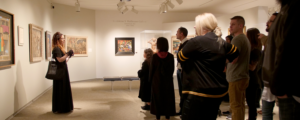
[bctt tweet=”“There are so many things that are competing now on a Friday night. Instead of going to a gallery, you can order GrubHub and watch Netflix. We want to make sure that the community is staying engaged.” – Rachel Unger #podcast”]
That’s fantastic, and I love how you talked about it as it’s, the goals being retention, so you’re reaching them, getting them there but then getting them to stay connected to the Memorial Art Gallery and how important that is for you. Rachel, this has been really informative and I really appreciate your open and transparent answers and I know our listeners will learn a lot from you. Thank you very much for taking some time today.
Thank you so much for having me.
Rochester Museum and Science Center: Attracting New Audiences
Rachel offered us so much insight and I love how the Memorial Art Gallery uses the Visitor Services department to make those community connections and seek out partnerships. My conversation with Hannah Barry from the Rochester Museum and Science Center sheds some light on adapting programming to the lifestyles and needs of different audiences.
Hannah Barry, Digital Engagement, and Communication Specialist, Rochester Museum and Science Center: http://www.rmsc.org/
Hannah, thank you so much for taking some time out of the Museum Association of New York’s annual conference to talk to me today.
Great to be chatting with you.
I’m looking forward to hearing your perspective on some of these questions that we’ve been exploring today. To start, how do you attract new audiences within your local market?
To attract new audiences, we try to look for new ways we can use our programming and offerings to adapt to the lifestyles and the needs of different groups. For example, our After Dark events have been great. At first, with younger audiences, and then it even expanded to generations that were a little bit older. By opening up the museum in the evening, it fits with people’s schedules a bit better.
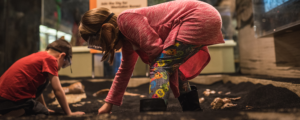
[bctt tweet=”“To attract new audiences, we try to look for new ways we can use our programming and offerings to adapt to the lifestyles and the needs of different groups.” – @hrosebarry #podcast”]
Another example is that we have started our Astronomy for Adults series at 2:00 p.m. on Wednesday afternoons. So for some people, two in the afternoon is the best time to come, so we find our more senior audiences or active older adults, come in with their groups and organizations, adapting to what time works best for them.
I think that’s a really great way to approach it. How are you reaching audiences past your local market, and getting that visitor market to find you?
One thing that we’ve enjoyed is our membership with Visit Rochester. They help us with the travel bloggers. Last year, they had the Macaroni Kid Publishers in town. We hosted them for lunch. It’s working with our local visitor’s bureau and other organizations that we attract other audiences outside our region.
Rochester Museum and Science Center: Being a Community Anchor
That’s fabulous. How does your museum work as a community anchor?
We work as a community anchor, particularly in regards to STEM education. We like to work with our local schools to bring them in for school visits, or even our RMSC delivers program goes to the schools if they can’t come to the museum. We host scout groups. We have a professional development opportunity coming up with the Rochester City School District. We like to offer support with some education, and also offer a place for those conversations to happen so we’re not just putting information out, but also being a place where people can discuss what they’re doing. We have graduate students from local universities coming in as Saturday presenters. They can set up their table and talk about the research they’re doing, so being a place for conversation.
That’s really great. So the school programs, both bringing the students in and then also going out into the schools. When you do some of that school outreach, do you have ways to encourage repeat visitation or to get the families in?
With our school groups, what we find is a lot of them make it part of their yearly plan, once they have their first visit. Particularly with our Haudenosaunee Days programming, in the fall, about the Native American cultures. It’s often full right after we post because it’s something people are wanting to come back to year after year.
As far as having families come, one of the things we did, we worked with a school on our Gift of Dolls exhibition and the students participating in a community mural project. To get the families to come once the exhibit was open, we offered the family and the child that participated to come to our opening celebration.
Rochester Museum and Science Center: Future Outlook
That’s great. What are the goals for the museum in the next three to five years, thinking about the future?
One exciting thing is that our nature center audiences have been growing. A couple years ago, we got a new director for the Nature Center, and we’ve been offering more public programming, trying to integrate it into what we’ve been doing at museum and planetarium so that we’re a unified organization.
One exciting new event that’s becoming really popular is the Orchestra in the Pines. Every June, we have the Finger Lakes Symphony Orchestra go out into the woods and play symphony. We have local wine and food so people can enjoy the nature center in a new way while collaborating with another organization.
That’s fantastic. Well, I really appreciate you taking some time out of the busy conference to talk to me and share some of your insights, and we’ll look forward to connecting with you again.
Thank you so much.
Websites:
- Eliza Kozlowski, Director of Marketing and Engagement at the George Eastman Museum in Rochester NY: https://www.eastman.org/
- Rachel Unger, Director of Marketing and Engagement at the Memorial Art Gallery of the University of Rochester: https://mag.rochester.edu/
- Hannah Barry, Digital Engagement, and Communication Specialist, Rochester Museum and Science Center: http://www.rmsc.org/
We value your thoughts and feedback and would love to hear from you. Leave us a review on your favorite streaming platform to let us know what you want to hear more of. Here is a quick tutorial on how to leave us a rating and review on iTunes!
